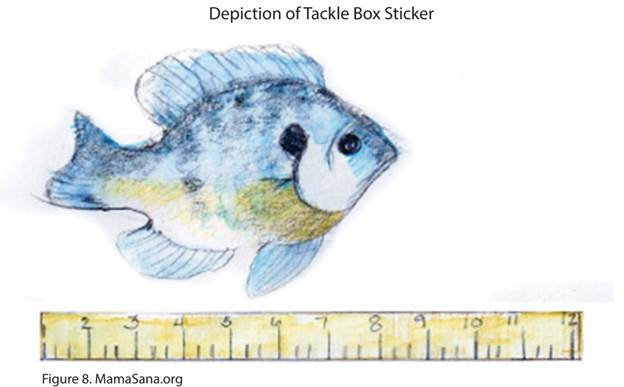Grantee Research Project Results
Final Report: Community Outreach and Translation Core
EPA Grant Number: R833293C004Subproject: this is subproject number 004 , established and managed by the Center Director under grant R833293
(EPA does not fund or establish subprojects; EPA awards and manages the overall grant for this center).
Center: The Center for Study of Neurodevelopment and Improving Children's Health
Center Director: Murphy, Susan K.
Title: Community Outreach and Translation Core
Investigators: Keating, Martha H. , Miranda , Marie Lynn , Maxson, Pamela
Institution: Duke University
EPA Project Officer: Callan, Richard
Project Period: May 1, 2007 through April 30, 2012 (Extended to April 30, 2014)
RFA: Centers for Children’s Environmental Health and Disease Prevention Research (2005) RFA Text | Recipients Lists
Research Category: Children's Health , Human Health
Objective:
- Support the community-based neighborhood assessment being undertaken as part of Research Projects A (R833293C001) and B (R833293C002);
- Partner with nursing programs at Duke-affiliated hospitals to develop and present curricula to nursing students on environmental exposures and maternal and child health outcomes;
- Develop culturally appropriate advisory materials on environmental contaminants for low-income expectant or nursing mothers with low English proficiency;
- Deliver training to local health department personnel focused on environmental factors related to maternal health and pregnancy outcomes;
- Participate in regional, state and federal policy dialogues to provide decision makers with policy-relevant, science-based information concerning environmental exposures and health disparities related to maternal and child health and well-being; and
- Increase awareness of maternal health and health disparities by facilitating bi-directional exchanges between Center investigators, community members, public health advocacy groups, and policy makers.
Summary/Accomplishments (Outputs/Outcomes):

Journal Articles on this Report : 11 Displayed | Download in RIS Format
| Other subproject views: | All 31 publications | 11 publications in selected types | All 11 journal articles |
|---|---|---|---|
| Other center views: | All 163 publications | 77 publications in selected types | All 76 journal articles |
| Type | Citation | ||
|---|---|---|---|
|
|
Dadabhoy FZ, Maxson PJ, Huff N, Auten RL. Perinatal exposure to air pollutants had adverse effects on behavioral outcomes in mice. International Journal on Disability and Human Development 2012;11(4):359-368. |
R833293 (Final) R833293C004 (Final) |
Exit |
|
|
Gruber A, Maxson P. Disparities in psychosocial health and the built environment during pregnancy. International Journal on Disability and Human Development 2012;11(4):377-385. |
R833293 (Final) R833293C004 (Final) |
Exit |
|
|
Henderson K, Maxson P. Obesity intervention strategies and the built environment in Durham, North Carolina. International Journal of Child and Adolescent Health 2009;2(3):Article 8. |
R833293 (Final) R833293C004 (Final) |
Exit |
|
|
Henry H, Anthopolos R, Maxson P. Traffic-related air pollution and pediatric asthma in Durham County, North Carolina. International Journal on Disability and Human Development 2013;12(4):467-471. |
R833293 (Final) R833293C004 (Final) |
Exit |
|
|
Koehrn KM, Keating MH. The regulation of agricultural pesticides in North Carolina: implications for migrant farm workers and their families. International Journal of Child and Adolescent Health 2009;2(3):Article 4. |
R833293 (Final) R833293C004 (Final) |
Exit |
|
|
Kroeger GL, Messer L, Edwards SE, Miranda ML. A novel tool for assessing and summarizing the built environment. International Journal of Health Geographics 2012;11:46 (13 pp.). |
R833293 (Final) R833293C004 (Final) |
Exit Exit Exit |
|
|
Martz M, Anthopolos R, Geller M, Maxson P. Pediatric obesity and food access in Durham, North Carolina. International Journal of Child Health and Human Development 2014;7(3). |
R833293 (Final) R833293C004 (Final) |
Exit Exit |
|
|
Maxson PJ. Together we can break the cycle. International Journal on Disability and Human Development 2012;11(4):307-314. |
R833293 (Final) R833293C004 (Final) |
Exit |
|
|
Miranda ML, Keating MH, Edwards SE. Environmental justice implications of reduced reporting requirements for the Toxics Release Inventory Burden Reduction Rule. Environmental Science & Technology 2008;42(15):5407-5414. |
R833293 (Final) R833293C004 (Final) |
Exit Exit Exit |
|
|
Modlin E, Maxson P. Breaking the cycle of maternal depression: an initiative to improve children’s environmental health. International Journal of Child Health and Human Development 2010;3(4):405-411. |
R833293 (Final) R833293C004 (Final) |
Exit |
|
|
Ouyang R. The relationship between the built environment and birthweight. Reviews on Environmental Health 2011;26(3):181-186. |
R833293 (Final) R833293C004 (Final) |
Exit |
Supplemental Keywords:
risk communication, outreach, translation, participatory research, built environment, children's health, WIC, mercury-contaminated fish, fish consumption advisory, mercuryProgress and Final Reports:
Original AbstractMain Center Abstract and Reports:
R833293 The Center for Study of Neurodevelopment and Improving Children's Health Subprojects under this Center: (EPA does not fund or establish subprojects; EPA awards and manages the overall grant for this center).
R833293C001 Research Project A: Mapping Disparities in Birth Outcomes
R833293C002 Research Project B: Healthy Pregnancy, Healthy Baby: Studying Racial Disparities in Birth Outcomes
R833293C003 Research Project C: Perinatal Environmental Exposure Disparity and Neonatal Respiratory Health
R833293C004 Community Outreach and Translation Core
R833293C005 Geographic Information System and Statistical Analysis Core
The perspectives, information and conclusions conveyed in research project abstracts, progress reports, final reports, journal abstracts and journal publications convey the viewpoints of the principal investigator and may not represent the views and policies of ORD and EPA. Conclusions drawn by the principal investigators have not been reviewed by the Agency.
Project Research Results
11 journal articles for this subproject
Main Center: R833293
163 publications for this center
76 journal articles for this center
